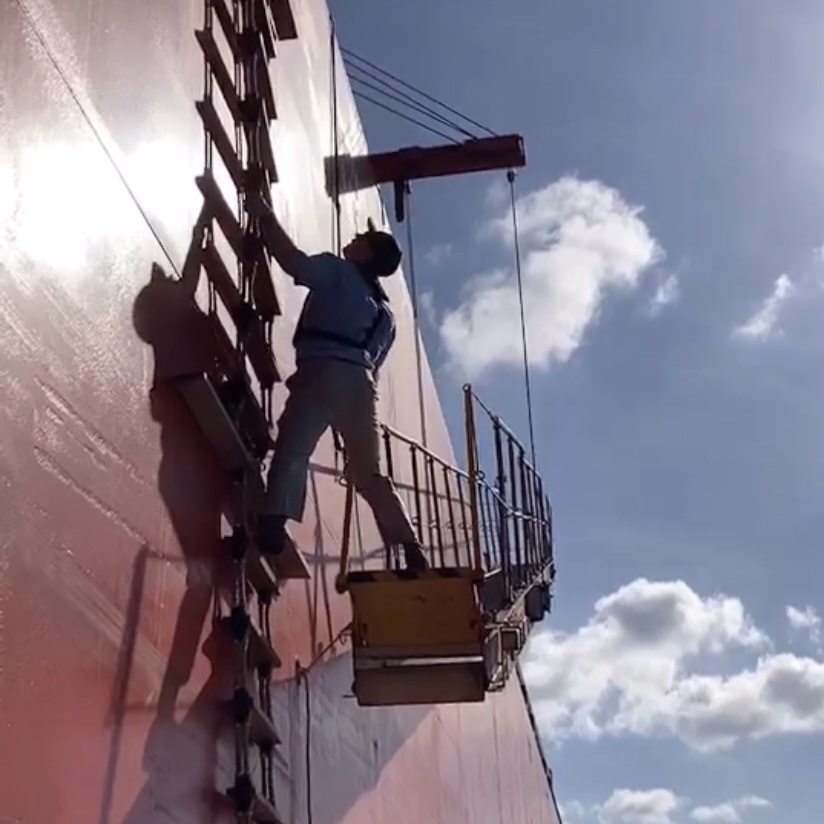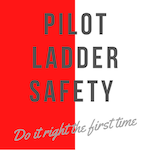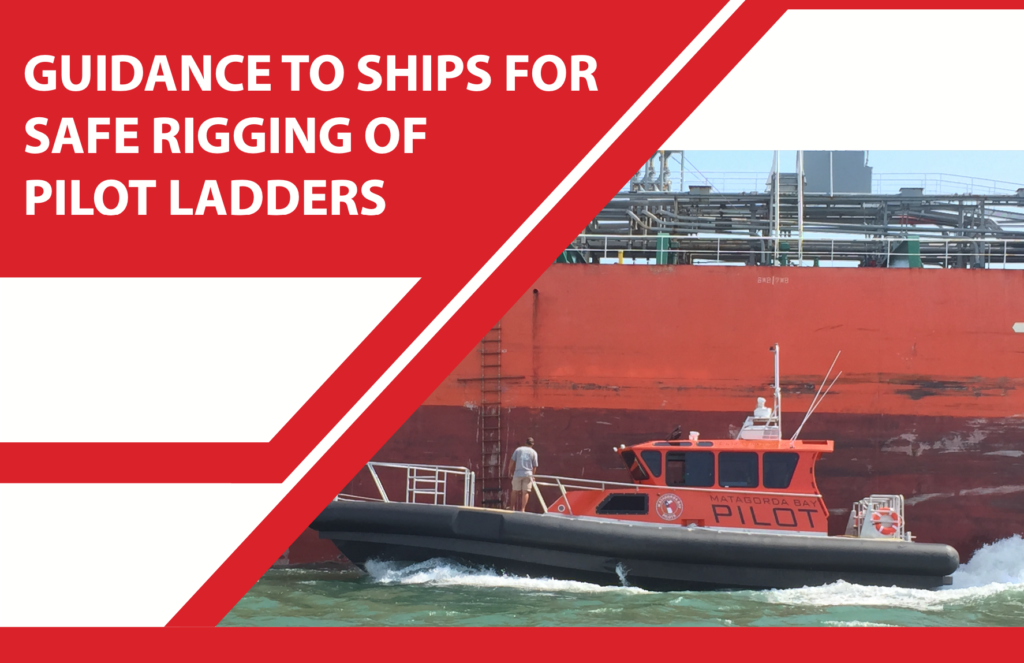Whenever a combination ladder is used for pilot transfer operations, sometimes the inner stanchion on the bottom platform is not used. Maybe the thought behind this is: ” It is on the inboard side, so the pilot does not need it to prevent him from falling overboard.”
The reason for the inner stanchion is balance. When boarding or disembarking the pilot needs both inboard and outboard stanchions to maintain a balance getting on- an off the bottom platform
The reason is balance
The below two pictures show what happens when the inner stanchion is not used when disembarking: on the final step of his descend onto the platform, he has only one hand to hold his balance. That could be fatal when the ship takes a sudden roll. Always secure the inner stanchion in place!
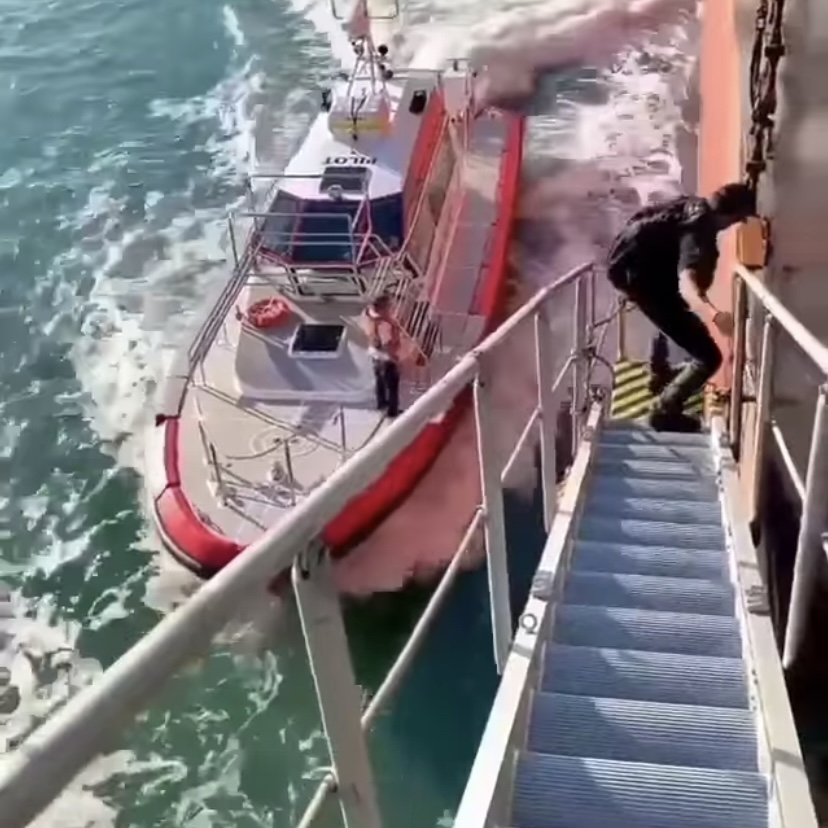
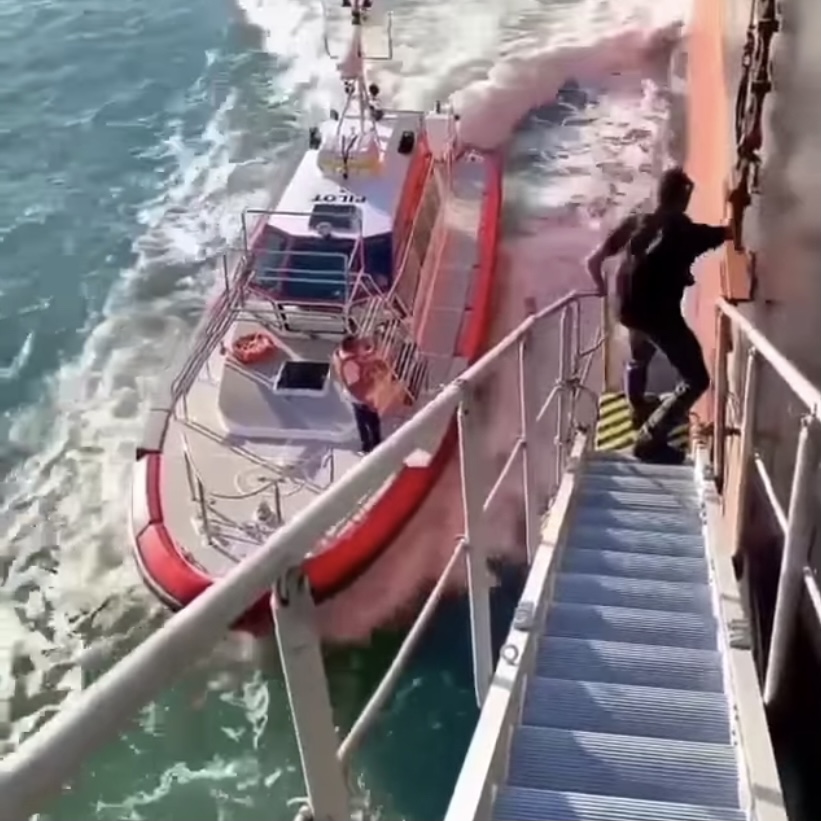
When looking at the next picture, the pilot embarks a vessel using a combination ladder. The first thing he grabs when he steps off the pilot ladder onto the accomodation ladder is: the inner stanchion. It is the closest to the pilot ladder and that’s why it is very important for getting a firm grip and balance when stepping onto the bottom platform of the accommodation ladder.
